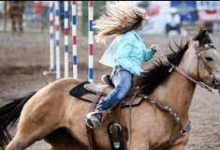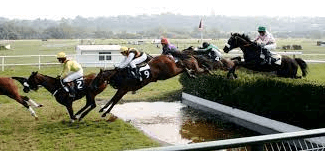What Is The Judging Criteria In Western Pleasure?

Western pleasure is a popular equestrian discipline that showcases the horse’s ability to perform in a relaxed and smooth manner. In order to evaluate the performance of horses in this class, judges follow specific criteria that focus on the horse’s way of going, head carriage, and cadence and rhythm. These judging criteria are designed to assess the horse’s overall movement, balance, and responsiveness to its rider.
One of the key aspects considered by judges in western pleasure is the horse’s way of going. This refers to how smoothly and effortlessly the horse moves at each gait. Judges look for a relaxed and natural stride that displays fluidity and harmony between the horse’s front and hind legs. The ideal western pleasure horse should exhibit a level top line with minimal head or tail movement while maintaining an even pace throughout their performance.
Another important factor in judging western pleasure is head carriage. Judges assess how well the horse carries its head at each gait, looking for a relaxed neck position that aligns with its body frame. The ideal head carriage is low but not excessively so, allowing for a comfortable headset without any tension or resistance from the horse. A correct head carriage contributes to an overall pleasing appearance and demonstrates proper training and understanding between horse and rider.
In addition to way of going and head carriage, judges also consider cadence and rhythm when evaluating western pleasure horses. Cadence refers to the regularity of footfalls within each gait while rhythm pertains to maintaining consistent timing throughout movements. Horses that display a steady cadence with distinct footfalls demonstrate balance, athleticism, and correctness in their gaits.
Overall, judging criteria in western pleasure aim to reward horses that exhibit exceptional movement quality combined with relaxation under saddle. By assessing elements such as way of going, head carriage, cadence, and rhythm, judges ensure fair evaluations based on objective standards established within this discipline. Understanding these criteria allows riders participating in western pleasure competitions to work towards achieving and showcasing the desired qualities that reflect the essence of this discipline.
Way of Going
The evaluation of Way of Going serves as a crucial component in the judging criteria for western pleasure.
Judges look for horses that exhibit balance and impulsion, which are essential qualities in this discipline.
Balance refers to how the horse carries itself while maintaining a steady rhythm and even distribution of weight between its front and hindquarters.
A well-balanced horse moves smoothly and effortlessly, with its head and neck positioned naturally.
Impulsion, on the other hand, refers to the energy and forward movement displayed by the horse.
The ideal western pleasure horse should have controlled impulsion, meaning it moves forward willingly but without excessive speed or tension.
Achieving a harmonious combination of balance and impulsion is vital as it demonstrates the horse’s ability to perform comfortably at various gaits while providing an enjoyable ride for both the rider and spectators alike.
Head Carriage
Head carriage in western pleasure is evaluated based on the position and balance of the horse’s neck, emphasizing a graceful arch akin to a swan gliding across a serene lake.
The correct head position plays a vital role in showcasing the horse’s conformation and overall appearance. It is important for the horse to maintain an appropriate headset and neck position throughout the performance.
Judges look for a relaxed and natural head carriage that is neither too high nor too low, creating an elegant silhouette. The horse should carry its head with ears level or slightly below the withers, while maintaining a soft contact with the bit.
Additionally, the neck should be rounded and supple, blending smoothly into the shoulders without tension or resistance. A correct head position enhances not only the aesthetic appeal but also indicates proper collection, engagement of hindquarters, and willingness to perform.
Cadence and Rhythm
Cadence and rhythm in the western pleasure discipline are fundamental elements that contribute to a captivating and harmonious performance, showcasing the horse’s innate grace and fluidity of movement.
The cadence refers to the regularity and smoothness of the horse’s footfalls, creating a balanced and flowing gait. Judges look for a consistent cadence that is neither rushed nor sluggish, but rather maintains an even tempo throughout the entire performance. A horse with good cadence exudes relaxation through its movements, demonstrating a willingness to work with its rider in perfect harmony.
Rhythm, on the other hand, focuses on the timing and coordination of each footfall in relation to one another. It encompasses both lateral (side-to-side) and diagonal (opposite side) pairings of footfalls, which should be executed evenly without any hesitation or deviation from a steady pattern. Achieving a rhythmic gait requires impeccable balance from the horse, as well as suppleness and responsiveness to subtle cues from the rider.
Overall, cadence and rhythm are essential components that reflect not only the horse’s physical abilities but also its mental state of relaxation and willingness to perform at its best.
Frequently Asked Questions
How does the judge evaluate the overall attitude and demeanor of the horse in western pleasure?
The judge evaluates the horse’s overall attitude and demeanor in western pleasure by observing its behavior and obedience. The horse’s calmness, willingness to respond to cues, and relaxed body language are key factors in determining its performance.
What role does the horse’s conformation play in the judging criteria for western pleasure?
The role of conformation in the judging criteria for western pleasure is crucial. A horse’s build directly affects its movement and ability to perform the desired gaits with ease and grace, making it a vital consideration for judges.
Are there any specific penalties or disqualifications for certain behaviors or actions during a western pleasure competition?
Specific penalties and disqualifications can be imposed during western pleasure competitions to enforce proper behavior. These consequences aim to maintain the integrity of the event and ensure fair competition, promoting a sense of discipline and respect within the sport.
How does the judge assess the horse’s responsiveness to the rider’s cues and commands in western pleasure?
The judge assesses the horse’s responsiveness to the rider’s cues and commands in western pleasure by observing how promptly and accurately the horse reacts. Evaluating the rider’s cues involves considering their timing, clarity, and effectiveness in communicating with the horse.
Is there a specific emphasis on the horse’s balance and smoothness of movement in the judging criteria for western pleasure?
The evaluation of a horse’s balance and smoothness of movement holds significant importance in the judging criteria for western pleasure. Judges meticulously observe the horse’s ability to maintain equilibrium and execute fluid motions, ensuring an aesthetically pleasing ride.
Conclusion
In the realm of Western Pleasure, judging criteria are meticulously crafted to evaluate a horse’s performance. One crucial aspect is the ‘Way of Going,’which scrutinizes how smoothly and effortlessly the horse moves. It demands an elegant gait that embodies gracefulness and fluidity, captivating judges and spectators alike.
Additionally, ‘Head Carriage’plays a pivotal role in determining a horse’s success. Judges assess whether the horse carries its head at an appropriate height, accentuating its natural beauty while maintaining a relaxed demeanor.
Another vital criterion is ‘Cadence and Rhythm.’A well-executed cadence denotes precise footfall patterns, showcasing the horse’s impeccable timing and coordination. The rhythm, on the other hand, encompasses consistency in pace throughout various maneuvers—a testament to both the rider’s skill and the horse’s ability to maintain composure under pressure. This combination creates an exquisite spectacle that leaves viewers spellbound.
To conclude, Western Pleasure judging criteria embody meticulous attention to detail while providing a platform for horses to showcase their elegance and finesse. The Way of Going showcases horses’ seamless movement, captivating observers with their effortless gracefulness. Meanwhile, Head Carriage emphasizes proper posture as horses carry themselves with poise and tranquility.
Lastly, Cadence and Rhythm highlight precise footfall patterns and consistent pacing throughout performances—testaments to both rider expertise and equine composure. By adhering to these rigorous standards, participants can excel in this discipline while mesmerizing audiences with their awe-inspiring displays of talent and harmony.




